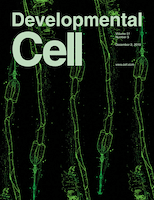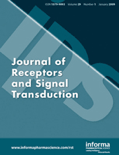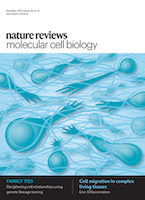
Autophagy
Scope & Guideline
Innovating Understanding of Autophagy in Health and Disease
Introduction
Aims and Scopes
- Mechanisms of Autophagy Regulation:
Research in this area explores the molecular pathways and regulatory mechanisms that control autophagy, including the role of autophagy-related proteins, signaling pathways like mTOR, AMPK, and the interplay with cellular stress responses. - Autophagy and Disease:
This scope addresses the implications of autophagy in various diseases, such as neurodegenerative disorders, cancer, metabolic diseases, and infections, highlighting how autophagy can be both protective and detrimental depending on the context. - Cellular and Organismal Functions of Autophagy:
Studies investigate the role of autophagy in cellular homeostasis, differentiation, and development, as well as its contributions to organismal health, including aging, immunity, and tissue regeneration. - Innovative Methodologies in Autophagy Research:
The journal emphasizes novel experimental approaches and technologies for studying autophagy, including advanced imaging techniques, genetic manipulation, and bioinformatics tools, providing insights into autophagic processes. - Therapeutic Targeting of Autophagy:
Research focuses on potential therapeutic strategies aimed at modulating autophagy for disease intervention, including the development of drugs that enhance or inhibit autophagic processes to treat various conditions.
Trending and Emerging
- Mitophagy and Mitochondrial Quality Control:
A surge in research focused on mitophagy, the selective degradation of mitochondria, underscores its critical role in maintaining cellular health, particularly in the context of neurodegenerative diseases and metabolic disorders. - Autophagy in Cancer Therapy:
Emerging studies are increasingly exploring the dual role of autophagy in cancer, both as a tumor suppressor and promoter, leading to novel therapeutic strategies that target autophagic processes to improve cancer treatment outcomes. - Autophagy and Immune Response:
There is a growing interest in the intersection of autophagy and immunology, particularly how autophagic processes influence immune responses and the role of autophagy in pathogen clearance and inflammation. - Nutrient Sensing and Autophagy:
Research is trending towards understanding how nutrient availability and metabolic states regulate autophagy, reflecting a more integrated view of autophagy in metabolism and energy homeostasis. - Role of Autophagy in Aging and Longevity:
Studies investigating the relationship between autophagy, aging, and longevity are gaining prominence, focusing on how autophagy contributes to cellular maintenance and the promotion of healthy aging.
Declining or Waning
- Basic Mechanistic Studies:
There appears to be a waning interest in purely mechanistic studies that do not connect to broader biological implications or therapeutic applications, as researchers increasingly focus on the translational aspects of autophagy. - Plant Autophagy Mechanisms:
Research specifically centered on plant autophagy mechanisms has decreased, possibly due to a shift in focus towards mammalian systems and disease-related studies, which are perceived as having more immediate relevance to human health. - Historical Perspectives on Autophagy:
Papers focusing on historical reviews or theoretical discussions about the evolution of autophagy mechanisms have become less common as the community prioritizes original research and current findings over retrospective analyses. - Single-Cell Autophagy Studies:
There is a noticeable reduction in publications solely dedicated to single-cell autophagy studies, as researchers are now more inclined to explore autophagy in the context of multicellular systems and complex tissues. - Non-canonical Autophagy Pathways:
Research on non-canonical autophagy pathways, while still relevant, appears to be less emphasized compared to more established canonical pathways, as the field moves towards integrating findings into broader physiological contexts.
Similar Journals

BMC Molecular and Cell Biology
Unleashing innovative research in molecular and cell biology.BMC Molecular and Cell Biology is a forward-thinking open-access journal published by BMC, specializing in the vital fields of molecular biology and cell biology. Since its inception in 2019, the journal has carved a niche for itself, ranking in the Q3 quartile in both Cell Biology and Molecular Biology categories as of 2023. With an ISSN of N/A and an E-ISSN of 2661-8850, the journal provides a platform for groundbreaking research, high-quality reviews, and innovative methodologies. Situated in the United Kingdom, BMC Molecular and Cell Biology promotes a diverse range of studies, addressing fundamental questions in biology that resonate with both experts and new researchers alike. The journal's commitment to open access ensures that valuable findings are readily available to the global scientific community, fostering collaboration and knowledge-sharing across disciplines. Researchers aiming to contribute to the field of cell and molecular biology will find this journal an indispensable resource for both publishing and staying informed on the latest advances.

CELLULAR & MOLECULAR BIOLOGY LETTERS
Fostering Collaboration in the World of Molecular DiscoveriesCELLULAR & MOLECULAR BIOLOGY LETTERS, published by BMC, is a premier open-access journal dedicated to disseminating high-quality research in the fields of Biochemistry, Cell Biology, and Molecular Biology. Established in 1996, the journal has emerged as a leader in its domain, boasting an impressive Q1 ranking across three critical categories as of 2023, reflecting its significant impact within the scientific community. With an ISSN of 1425-8153 and an E-ISSN of 1689-1392, it offers accessible research findings to a global audience, having been open access since 2013. Situated in the United Kingdom, at CAMPUS, 4 CRINAN ST, LONDON N1 9XW, the journal continues to serve as a vital resource for researchers, professionals, and students, contributing to advancements in the understanding of cellular and molecular processes. By providing a platform for original research, reviews, and short communications, CELLULAR & MOLECULAR BIOLOGY LETTERS plays a crucial role in fostering dialogue and collaboration within the scientific community.

BIOCELL
Connecting Researchers for a Deeper Understanding of Life SciencesBIOCELL is a distinguished peer-reviewed journal dedicated to the field of Cell Biology, published by TECH SCIENCE PRESS. Since its inception in 1995, the journal has been at the forefront of disseminating innovative research, with converged publication years extending from 1995 to 2013 and from 2015 to 2024. Although it currently holds a Q4 ranking in the Cell Biology category according to the 2023 category quartiles, BIOCELL aims to foster advancements by providing a platform for researchers, professionals, and students to share their findings in biochemistry, genetics, and molecular biology. The journal is available in both print (ISSN: 0327-9545) and digital formats (E-ISSN: 1667-5746) and seeks to attract contributions that enhance scholarly dialogue and understandings of cellular mechanisms and innovations. With a commitment to quality research and critical discourse, BIOCELL plays an important role in nurturing the scientific community within Argentina and beyond, offering vital insights that contribute to the advancement of the life sciences.

DEVELOPMENTAL CELL
Charting New Pathways in Biochemistry and GeneticsDEVELOPMENTAL CELL, published by CELL PRESS, stands as a premier journal in the fields of Biochemistry, Genetics and Molecular Biology, Cell Biology, and Developmental Biology. With a significant influence evidenced by its Q1 rankings across several categories in 2023 and a remarkable Scopus ranking placing it at the 98th percentile for Developmental Biology, this journal is pivotal for researchers and academics aiming to advance their understanding of cellular processes. Covering a broad range of topics from molecular mechanisms to cellular developmental pathways, DEVELOPMENTAL CELL publishes cutting-edge research articles that contribute to the dynamic landscape of cell biology and related disciplines. Although it does not currently offer open access, the journal is accessible through institutional subscriptions, reinforcing its commitment to disseminating high-quality scientific knowledge produced by leading experts in the field. Based in the United States, DEVELOPMENTAL CELL continues to push the boundaries of discovery and innovation in life sciences, making it an essential resource for professionals, researchers, and students alike in the quest for foundational biological insights.

JOURNAL OF MUSCLE RESEARCH AND CELL MOTILITY
Connecting Researchers to the Heart of Muscle and Cell StudiesJOURNAL OF MUSCLE RESEARCH AND CELL MOTILITY, published by Springer, is a premier journal dedicated to advancing our understanding of muscle biology and cellular motility. With an ISSN of 0142-4319 and an E-ISSN of 1573-2657, this journal stands out in the fields of biochemistry, cell biology, and physiology, proudly holding a Q2 ranking in each of these categories as per 2023 metrics. Covering significant developments from its inception in 1963 to its anticipated contributions through 2024, this journal serves as a vital platform for researchers and professionals to disseminate their findings and insights globally. Although it does not currently offer open access, its robust academic rigor and relevance are evident from its Scopus rankings, making it a crucial resource for those invested in the biological sciences. With a focus on original research articles, reviews, and methodological advancements, the journal fosters innovative collaborations and discussions within the scientific community, making it an invaluable addition to any researcher’s library.

Cell Stress
Illuminating the Pathways of Stress in CellsCell Stress is a prestigious, peer-reviewed open access journal dedicated to advancing research in the fields of biochemistry, genetics, molecular biology, cancer research, and physiology. Published by SHARED SCIENCE PUBLISHERS OG in Austria, this journal has rapidly established itself since its inception in 2017, achieving Q1 status in multiple categories, indicative of its high impact and quality. With an impressive Scopus ranking—holding a top percentile position in its respective fields—Cell Stress aims to foster interdisciplinary collaboration and disseminate cutting-edge findings that enhance our understanding of cellular stress mechanisms and their implications in health and disease. The journal's commitment to open access since its launch ensures that critical research is accessible to a global audience, thereby facilitating the exchange of knowledge among researchers, professionals, and students alike. Address your submissions or inquiries to AM BLUMENHAG 25-4, Graz 8010, Austria, and contribute to this dynamic platform that is shaping the future of molecular medicine.

JOURNAL OF RECEPTORS AND SIGNAL TRANSDUCTION
Exploring the Dynamics of Receptor MechanismsJOURNAL OF RECEPTORS AND SIGNAL TRANSDUCTION, published by TAYLOR & FRANCIS LTD, is a premier academic journal dedicated to advancing our understanding of receptor biology and signal transduction mechanisms. With an ISSN of 1079-9893 and an E-ISSN of 1532-4281, this journal has maintained a reputable standing since its inception in 1980, continually addressing pivotal topics in biochemistry, cell biology, and molecular biology. As evidenced by its 2023 Scopus rankings, which place it in the 64th percentile for Biochemistry and Genetics and Molecular Biology, JOURNAL OF RECEPTORS AND SIGNAL TRANSDUCTION remains a vital source for cutting-edge research, providing insights that are essential for both academic and practical applications. Although the journal currently offers limited open access options, it stands out in the Q2 and Q3 quartiles of its respective categories, making it an invaluable resource for researchers, professionals, and students aiming to stay abreast of the latest findings and methodologies in receptor and signaling research. The journal's commitment to disseminating high-quality research underscores its significance within the scientific community, fostering innovation and collaboration across disciplines.

CELL DEATH AND DIFFERENTIATION
Illuminating the Pathways of Cellular TransformationCELL DEATH AND DIFFERENTIATION, published by SpringerNature, is a leading peer-reviewed journal that has been at the forefront of advancing knowledge in the fields of cell biology and molecular biology since its inception in 1994. With an impressive impact factor and ranking in the Q1 quartile for both categories as of 2023, it is recognized as an essential resource for researchers and professionals dedicated to understanding the intricate processes of cellular death and differentiation. The journal publishes high-quality original research articles, reviews, and commentaries, fostering an interdisciplinary dialogue among scientists exploring the molecular mechanisms that underpin these fundamental biological processes. With its commitment to excellence, CEL DEATH AND DIFFERENTIATION bridges gaps in knowledge and stimulates innovation within the scientific community. To access cutting-edge research from this prestigious journal, you may visit their website for subscription options and explore a wealth of knowledge that is crucial for advancing the frontiers of biological research.

CELLULAR AND MOLECULAR LIFE SCIENCES
Unlocking the Secrets of Life at the Cellular LevelCELLULAR AND MOLECULAR LIFE SCIENCES, published by SPRINGER BASEL AG, stands as a premier journal dedicated to advancing the field of cellular and molecular biology. With an impressive 2023 impact factor reflected in its Q1 rankings across key categories—including Cell Biology, Molecular Biology, and Pharmacology—it serves as a critical platform for researchers aiming to disseminate high-quality findings in these dynamic fields. Operated under an open access framework, the journal allows broader accessibility to groundbreaking research, fostering collaboration amongst scientists globally. Based in Switzerland, CELLULAR AND MOLECULAR LIFE SCIENCES has been at the forefront of scientific publishing since 1952, adapting to contemporary scientific challenges and trends, ultimately shaping the future of life sciences.

NATURE REVIEWS MOLECULAR CELL BIOLOGY
Exploring groundbreaking insights in molecular processes.NATURE REVIEWS MOLECULAR CELL BIOLOGY, published by NATURE PORTFOLIO, stands as a seminal journal in the fields of cell and molecular biology, with a significant impact factor that underscores its influence and reputation within the scientific community. Established in 2000 and continuing its legacy into 2024, this journal delivers comprehensive reviews that synthesize current knowledge and advancements in molecular and cellular processes. Respected for its high-quality articles, it has maintained a prestigious Q1 ranking in both Cell Biology and Molecular Biology categories as of 2023. With an exceptional Scopus ranking, taking the top position in its category, it attracts a readership of prominent researchers, professionals, and students eager to stay abreast of groundbreaking discoveries and methodologies. Although it does not offer Open Access, subscribers benefit from exclusive access to vital insights that foster innovative research approaches and advancements in the life sciences. The journal’s objective is to bridge the gap between research and application, providing indispensable resources to its audience while contributing to the global conversation on molecular and cellular biology.